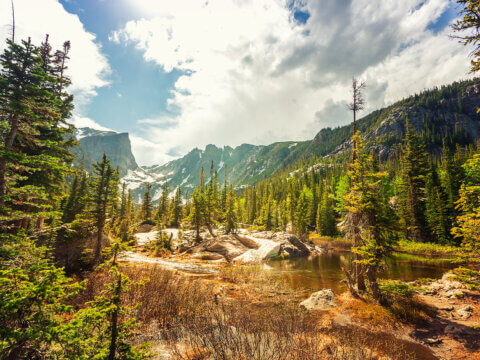The International Movement is Growing but Not Guaranteed
In Western Australia, 1400 people came to the opening event at the Perth Concert Hall launching Nature Play WA, a statewide campaign to connect young people with the natural world.
Following a land acknowledgement and a speech by a visiting American, Sport and Recreation Minister Terry Waldron announced the campaign in Western Australia, the nation’s largest state, occupying the entire western third of the continent. On April 21, the state government issued a press release:
“A new movement to be launched tonight in Perth will motivate families to get outside and experience nature together. Nature Play WA will provide encouragement for parents and help them develop strategies to get their children away from the TV and computer screen. The departments of Sport and Recreation and Environment and Conservation will work together to provide a series of resources encouraging families to get outside together,” Mr. Waldron said. “The first of these resources is the Nature Play WA website, which will evolve to offer a complete menu of activities for the family and give tips on how they can create a new community of active families to share the fun of being in nature.”
So the movement is spreading globally, as well as in the United States where 72 regional or state campaigns have been launched. As Suz Lipman wrote here last week, we’re receiving reports of programs, clubs, and events from far flung corners of the world, from China to London and South Africa, Santiago, Chile; and Puerto Montt, Chile; Dunedin, New Zealand; Canada, and across Europe — countries represented by members on the Children & Nature Network discussion forum range from England, Scotland, Belgium, and France to Spain, Italy, Austria, Sweden, Finland, and the Netherlands. Add the Philippines, Japan and Kenya to that list.
However, the growth of the Children and Nature Movement is not guaranteed. One reason is that competition for children’s time is increasing.
The Kaiser Family Foundation reports that Americans between the ages of 8 and 18 spend an average 7 1/2 hours a day using some sort of electronic device. Last week, the Pew Research Center reported a study that found that half of American teenagers send 50 or more text messages a day, and one third send more than 100 a day, leading the researchers to note that the initial qualitative evidence shows that the ease of electronic communication may be making teens less interested in face-to-face communication with their friends. Also last week, the Boy Scouts of America announced a new pin for Cub Scouts: for playing video games. This isn’t to say that electronics should be demonized (they should not), but it is to say that the experience of childhood — and adulthood — is severely out of balance.
A second reason that the future of the Children and Nature Movement is not guaranteed is that it’s being seeded largely by nonprofit groups, and only secondarily by government (Western Australia is an exception) and business (REI and The North Face come to mind). For decades, the nonprofit groups that connect children to nature, directly or indirectly, have struggled to survive. With the recession, that struggle continues.
Nonetheless, many of us sense that the Children and Nature Movement is reaching a tipping point.
It grows as part of something even bigger. In Melbourne, Children & Nature Network board member Howard Frumkin and I spoke at the first international Healthy Parks Healthy People Congress — which focused on how the natural world, parks and beyond, can improve the mental and physical health of all people and all ages. Remarkably, over 1000 people from 35 countries attended that conference.
It too, began with a ritual of respect to a people whose connection to nature is legendary. Today, mainstream Western culture is relearning what the indigenous people of Australia never forgot.
-
Voices
CAMPING WHILE PARENTING: A Mother-Son Adventure
-
Feature
A common thread: Indigenous-led foundation weaves together activism and art, climate and community
-
Network News
Community Spotlight: Prescribe Outside
-
Voices
That’s nice, mija: Finding common language in nature connections
-
Richard Louv
"HUMMINGBIRD PARENTS": Seven Actions Parents Can Take To Reduce Risk And Still Get Their Kids Outside







Commentaries on the C&NN website are offered to share diverse points-of-view from the global children and nature movement and to encourage new thinking and debate. The views and opinions expressed are those of the author(s) and do not necessarily reflect the position of C&NN. C&NN does not officially endorse every statement, report or product mentioned.